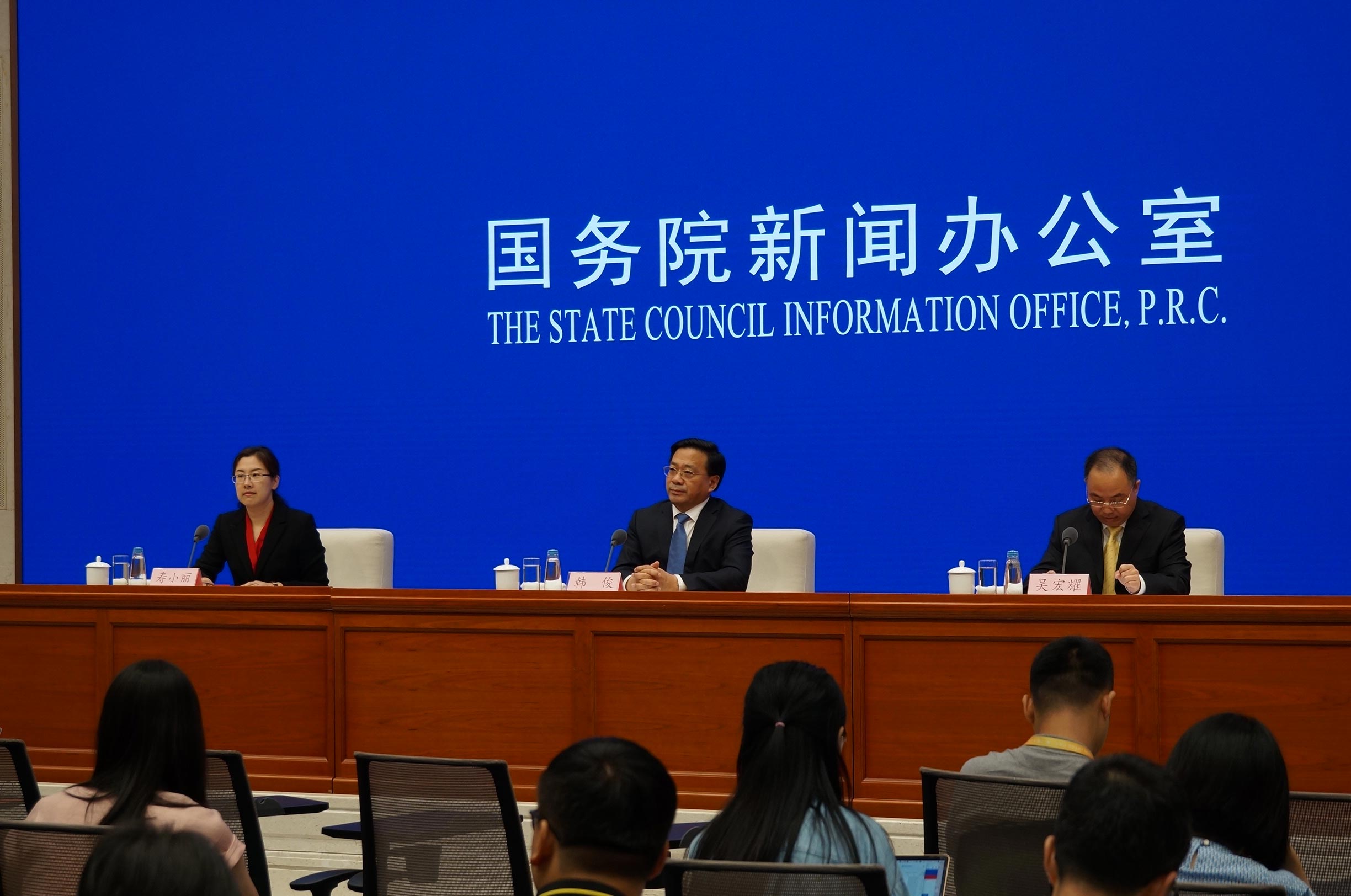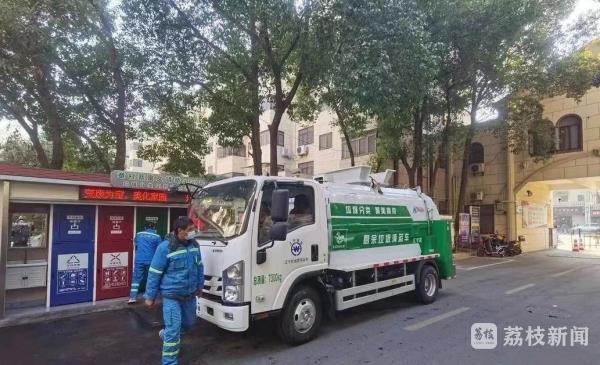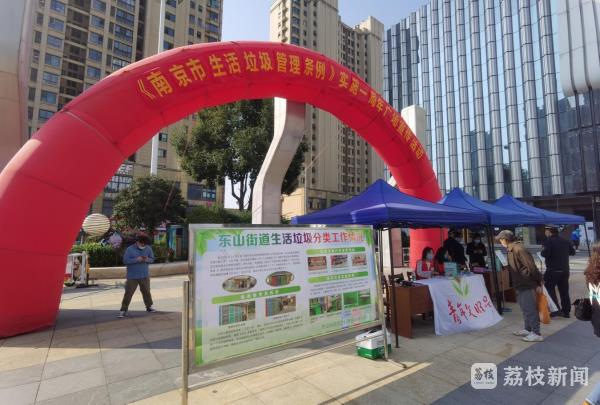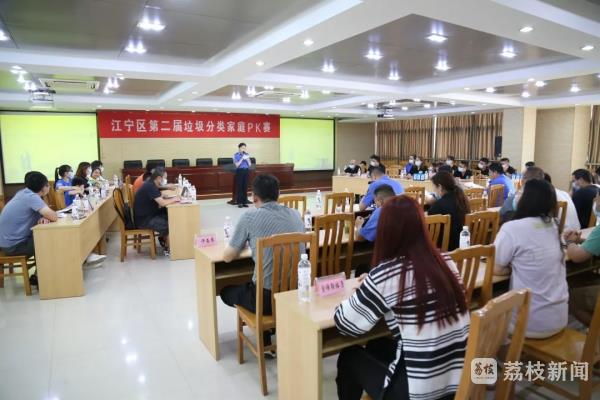Huanggang City Senior High School Entrance Examination and Senior High School Stage in 2023
The most complete information of school enrollment
01
What changes have been made in the enrollment of senior high school entrance examination and high school in our city in 2023?
In 2023, the city will fully implement the new senior high school entrance examination program. Compared with previous years, there are eight major changes in the enrollment of senior high school entrance examinations and high schools:
Change one, the examination subjects have changed.In 2023, the subjects of the senior high school entrance examination were subject to general examination, covering 15 subjects.
Change two, the way of presenting results has changed.Candidates’ scores are composed of "scoring subjects+grade presentation subjects", and the scores of Chinese, mathematics, English, physics, chemistry, morality and rule of law, history, biology, geography, physical education and health, and physical and chemical experiments are included in the total score of the candidates’ senior high school entrance examination with the original scores; Music, fine arts, information technology, life safety education, mental health education and comprehensive quality evaluation results are presented in four grades: A, B, C and D, which serve as a reference for enrollment. Students who apply for municipal and above demonstration senior high schools are only allowed to have at most one subject with the lowest grade (such as D); Students who have two or more D grades in five aspects of comprehensive quality evaluation of junior high school graduates cannot be admitted to ordinary high schools.
Change three, the score of the scoring subject has changed.Chinese 120 points, math 120 points, English 120 points, no change from previous years; The oral English test has been added, and the listening and speaking scores have been increased from 25 to 40 in previous years, and the written test has been reduced from 95 to 80 accordingly. Physics 70 points, an increase of 10 points over previous years; 50 points in chemistry, an increase of 10 points over previous years; 60 points for morality and rule of law, an increase of 20 points over previous years; 60 points in history, an increase of 20 points over previous years; 50 points in geography, an increase of 20 points over previous years; 50 points for biology, an increase of 20 points over previous years; 50 points for sports and health, an increase of 20 points over previous years; The experiment operation of physics and chemistry students was 30 points, which was 10 points higher than in previous years. The total score is 780 points, an increase of 130 points over previous years.
Change four, the examination method has changed.Take three ways: written examination, man-machine dialogue and practical examination. Chinese, mathematics, English, morality and rule of law, history, geography, physics, chemistry and biology are subject to paper-and-pencil closed-book examinations; Physical education and health implement the examination method combining on-site test and peacetime assessment; Man-machine dialogue is adopted in English listening and speaking test; Physical and chemical students’ experimental operation adopts on-site experimental operation examination; Music, art, and information technology are conducted by combining paper-and-pencil closed-book examination (accounting for 50%) with practical examination (accounting for 50%); Life safety education and mental health education implement paper-and-pencil closed-book examination.
Change five, the examination time has changed.On the afternoon of June 20, the examination of political history was adjusted from 80 minutes to 100 minutes, and on the afternoon of June 21, the examination of English was adjusted from 120 minutes to 90 minutes (listening and speaking test on April 18-19). The examination time of physical and chemical students’ experimental operation was adjusted from 20 minutes to 30 minutes.
Change six, the sports test items have changed.Required items: pull-ups for boys and sit-ups for girls for 1 minute; Elective items: one of basketball, football and volleyball; Test-free events: boys run 1000 meters, girls run 800 meters, no test is organized, and the total score is counted as 15 points out of 15.
Change seven, there are changes in the bonus points for excellent records.Among the objects with 5 points, "children of soldiers in combat troops" was added according to the Measures for the Implementation of Educational Preferential Treatment for Children of Soldiers in Hubei Province; According to the Measures for Rewarding and Protecting Courageous Persons in Hubei Province, "Children of Courageous Persons who have died in the line of duty or suffered from Grade I to IV disability according to law" have been added.
Change 8, the distribution ratio of students in provincial demonstration high schools has changed.According to the new senior high school entrance examination reform plan, the proportion of students assigned to provincial model high schools has increased from not less than 50% in previous years to not less than 60%.
02
This year, the examination time of each subject in the senior high school entrance examination in our city
In 2023, junior high school graduates (now ninth grade students) have organized examinations in biology, geography, music, art, information technology, life safety education and mental health education in advance; The English listening and speaking test was completed on April 18-19; The experimental operation examination of physics and chemistry students and the field test of physical education and health ended in late May. Other senior high school entrance examination subjects are scheduled as follows:

03
What items can candidates bring when taking the exam?
Candidates are only allowed to bring necessary stationery, such as 2B pencil, 0.5mm black signature pen or pen, ruler, compass, triangle and eraser. It is forbidden to carry or use electronic products with communication and memory functions such as mobile phones and electronic dictionaries.
04
What questions should candidates pay attention to when answering questions?
The subjects of the cultural course of the senior high school entrance examination in our city adopt the separation mode of test paper and answer sheet, and implement online marking. All candidates answer questions on the answer sheet, English and geography and biology answer sheets are A4 format, and Chinese, mathematics, political history and physics and chemistry answer sheets are A3 format.
(1) Before answering the questions, the number and name of the admission ticket should be filled in the corresponding columns of the test paper and the answer sheet, and the bar code should be pasted on the specified position on the answer sheet, and no other marks should be made on the test paper and the answer sheet.
(2) Fill in the answers to multiple-choice questions (objective questions) with 2B pencil on the answer sheet corresponding to the question number; Non-multiple choice questions (subjective questions) are answered in the corresponding answer area specified in the answer sheet with a 0.5 mm black gel pen or black ink pen.
(3) If you need to modify the answers to multiple-choice questions (objective questions), clean the original answers with an eraser first, and then re-fill them; If you need to modify the answer to the non-multiple choice question (subjective question), you can cross out the original writing content with a pen and answer the question again in the blank space in the designated answer area of the question.
(4) You must answer the question in the corresponding answer area on the answer sheet, and you are not allowed to modify the question number to answer the question or paste a piece of paper to supplement the answer. Answering questions on test papers or draft papers, failing to answer questions within the prescribed answer area, and answering questions beyond the answer area are all invalid.
(5) All drawings shall be made with 2B pencil or 0.5mm black ink pen, and shall be appropriately bold and thick.
(6) Keep the roll surface clean, with neat and clear handwriting and moderate spacing. It is forbidden to use correction fluid, correction fluid or transparent tape paper, and do not fold, scratch or defile the answer sheet.
(7) Candidates are forbidden to paint the absent marks, and the absent candidates are filled in by the invigilator.
05
What are the bonus points for high school enrollment this year?
Candidates who meet one of the following conditions will be admitted with 10 points on the basis of the total score of the senior high school entrance examination.
(1) children of martyrs;
(2) Children of soldiers stationed in three or more hard and remote areas determined by the state and two or more islands designated by Xizang Autonomous Region and the army, and children of soldiers who have worked in high-risk and high-risk posts such as flying, submarine, aerospace, nuclear-related, skydiving for more than three years or have worked in this area and post for more than five years after having children.
(3) children of on-the-job fire rescue workers who have worked continuously in fire rescue posts for more than 3 years or have worked in fire rescue posts for more than 5 years after having children.
(2) Candidates who meet one of the following conditions will be admitted with 5 points on the basis of the total score of the senior high school entrance examination.
(1) the public security system, the judicial administrative organs of the first and second class hero model and sacrifice the children of the people’s police in the line of duty, one to four disabled children of the people’s police in the line of duty;
(2) Children of soldiers from combat troops, first-class and second-class hard and remote areas stationed in the country and third-class island troops designated by the army, children of soldiers who died in the line of duty, children of first-to-fourth-class disabled soldiers, children of firefighters and rescuers, and children of soldiers and firefighters who won second-class merit in peacetime or third-class merit or above in wartime;
(3) children of courageous people who are legally recognized as having died in the line of duty or being disabled from grade one to grade four;
(4) Returned overseas Chinese, overseas Chinese children, returned overseas Chinese children and Taiwan Province candidates.
The military children mentioned in this paper include children of active servicemen, martyrs, soldiers who died in the line of duty and those who died. On-the-job fire rescue personnel refer to the fire commanders and fighters of the national comprehensive fire rescue team, excluding full-time government firefighters and fire clerks.
The same candidate meets a number of bonus points for filing, only the highest one is taken, and no bonus points are accumulated.
(3) Priority admission: Minority candidates are given priority admission under the same conditions as other candidates.
06
How to handle the procedure of adding points to the senior high school entrance examination this year?
In 2023, the procedures for the extra points and excellent records in our city are as follows:
First, candidates declare. Candidates fill in the Examination and Approval Form for the 2023 Senior High School Entrance Examination in Huanggang City, and prepare relevant documents and materials according to the instructions under the form, and submit them to the school together with the Letter of Commitment for the Integrity Declaration of Candidates signed by the candidates themselves and their parents.
Second, the school trial. After the school has collected all the relevant materials of the candidates, it will conduct a preliminary examination of the application materials. Those who meet the requirements will be signed by the manager and confirmed by the school seal. After publicity without objection, the application materials will be handed over to the county and urban recruitment agencies.
Third, the county (urban) recruitment agencies will review with relevant departments. According to the requirements of the "streamline administration, delegate power, strengthen regulation and improve services" reform, whether the excellent record materials provided by the candidates are true or not will no longer be certified by the candidates personally to the relevant departments, and the county (urban) recruitment agency will summarize the materials and submit them to the relevant departments for verification and seal.
(1) Children of martyrs shall be verified and sealed by the civil affairs departments of counties and cities;
(2) The children of soldiers who meet the conditions of extra points shall be verified and sealed by Huanggang Military Division; Children of fire rescue personnel shall be verified and sealed by Huanggang Fire Rescue Detachment;
(3) Returned overseas Chinese, their children and their children must be verified and stamped by the county (city) and municipal foreign affairs and overseas Chinese affairs departments;
(4) Candidates from Taiwan Province Province must be verified and stamped by the Taiwan Affairs Office of Huanggang City;
5] The children of the first-class and second-class heroes of the public security system, the children of the people’s policemen who died in the line of duty, and the children of the people’s policemen who were disabled in the line of duty from the first to the fourth level must be verified and stamped by the county (urban) public security department; The children of the first-class and second-class hero models of the judicial administrative organs, the children of the people’s policemen who died in the line of duty, and the children of the people’s policemen who were disabled in the line of duty from the first to the fourth level must be verified and stamped by the judicial department of the county (urban area).
[6] Minority candidates must be verified and stamped by the ethnic and religious administrative department of the county (urban area) where the candidates are registered.
(7) The candidates for the children of the courageous staff shall be checked and sealed by the county and city political and legal committees (courageous foundation).
After examination, the list of candidates who can score points for filing and the bonus items must be publicized at different levels. If it is found that it is inconsistent with the facts during the publicity period, the qualification for scoring points will be cancelled after verification; If fraud is found after the expiration of the publicity period, the batch admission will be reduced.
07
How is the time for high school schools to fill in their volunteers this year? Why do candidates have to fill in their volunteers online?
Candidates are required to fill in their volunteers in the "Hubei Senior High School Enrollment Management Information System" (website: http://gzjd.hubzs.com.cn). Candidates who have not filled in their volunteers online cannot participate in the online admission of ordinary senior high schools. In principle, the city adopts the mode of pre-test drills and post-test scores to fill in volunteers. On June 9-15, it will fill in volunteers online, and officially fill in volunteers from 9: 00 on July 8 to 17: 00 on July 13. There are also a few counties (urban areas) that adopt the voluntary reporting mode before the score is announced according to the local actual situation. At 17: 00 on July 13th, the online volunteering system will be closed, and candidates can no longer fill in or modify their volunteers. Online volunteering is an important basis for candidates’ admission. Candidates who have not filled in their volunteers online cannot participate in the online admission of ordinary high schools. Therefore, candidates must fill in their volunteers online within the specified time, otherwise the admission results will be directly affected, and even they cannot be admitted to ordinary high schools. Due to the reasons of the candidates and guardians, the candidates themselves shall bear the responsibility for the wrong or missing volunteering.
08
How many volunteer batches are set up for high school enrollment this year? Are many volunteers in the same batch parallel volunteer?
This year’s high school enrollment volunteers set up 6 batches. Advance approval 1: special students in sports and art (to be filled in by candidates who take the examination of characteristic schools for the whole city); Advance approval 2: special students in sports and art (to be filled in by candidates who take the unified examination in counties (cities, districts)); The first batch: Huanggang Middle School; The second batch: No.1 Middle School of the county (city, district) and the ordinary high schools in Huanggang city that can be enrolled in the second batch after approval; The third batch: ordinary senior high schools; The fourth batch: secondary vocational schools, "five-year consistent system" and "3+2" schools (majors). To implement parallel volunteer, only one volunteer can be filled in in advance (a project for enrollment in the whole city); Parallel volunteer I, parallel volunteer II and parallel volunteer III are approved in advance, and candidates can fill in 1-3 corresponding schools (enrollment projects for counties (cities, districts)); The second batch is set up in parallel volunteer I, parallel volunteer II and parallel volunteer III respectively, and candidates can fill in 1-3 corresponding schools; The third batch and the fourth batch are set up in parallel volunteer No.1, parallel volunteer No.2, parallel volunteer No.3, parallel volunteer No.4 and parallel volunteer No.5 respectively, and candidates can fill in 1-5 corresponding schools.
09
What are the main procedures for high school schools to fill in their volunteers this year?
The main process of volunteering in high school this year is as follows:
First, be familiar with the operation steps of volunteering. Candidates and parents should seriously study the policy of recruiting students, participate in school training, master the operation steps and processes of online volunteering, and understand the situation of senior high schools, especially the fees charged by private schools.
Second, get the user name and password. Candidates’ user names and passwords are uniformly distributed by junior high schools. Candidates should log on to the platform as soon as possible after obtaining the user names and passwords, be familiar with the operation, modify their initial passwords and keep them properly.
Third, fill in the voluntary draft form. Candidates and parents choose a suitable school, fill in the volunteer form, and prepare for the formal online volunteering.
Fourth, log in to the platform to fill in the volunteers. Candidates can fill in their volunteers online in the computer room provided by the school or in places with online reporting conditions, and qualified candidates can choose their own places to fill in.
Fifth, confirm the volunteer information. After the online volunteering is completed, candidates should confirm in the platform or log in to the platform again to confirm whether the volunteering information is successfully saved and whether the volunteering information is wrong.
10
Why not give up volunteering or other volunteering to fill in subsequent batches easily?
Admission to the middle school entrance examination is carried out on a voluntary basis in batches. Failure to fill in the volunteers is tantamount to giving up the qualification to participate in the admission. Generally speaking, candidates should not give up their wishes in subsequent batches easily.
(1) When the leading group of the city’s overall high school enrollment delimits the qualification line for high school enrollment, it will draw a line according to a certain proportion of the enrollment plan, and the number of online candidates will be greater than the enrollment plan, so some online candidates in each batch may be unsuccessful. Candidates should be risk-conscious, make full use of batch division and voluntary setting of each batch, and strive for more admission opportunities. Parallel volunteer can reduce the risk of unsuccessful candidates, but it is not a "safe". Once you fall into a misunderstanding or improper application, you may still be unsuccessful. Therefore, candidates should carefully fill in the next batch of volunteers on the basis of filling in the batch of volunteers corresponding to their senior high school entrance examination results.
(2) One more volunteer will give you one more chance. Some candidates only fill in one volunteer in each batch and do not fill in other volunteers, which actually reduces the chances of participating in the admission. Candidates should try their best to fill each batch of parallel volunteer, so as to increase their chances of participating in parallel volunteer.
11
How are the batches of ordinary high schools admitted?
Admission to ordinary high schools is carried out in batches according to the sequence of batches, which is unified in the "Hubei High School Enrollment Management Information System". If there is only one volunteer school in the same batch, students will be admitted from high score to low score according to the candidates’ wishes on the corresponding batch line; If there are two or more voluntary schools in the same batch, the application and admission shall be made in accordance with the principle of "candidates’ scores are given priority and voluntary order is followed". When filing, the online candidates who have filled in this batch of volunteers and have not been admitted to the previous batch of schools will be sorted from high score to low score according to the ranking score of filing; Then, according to the ranking, file from high score to low score in turn (the candidates with higher scores and ranking first). When a single candidate files, the files are retrieved in turn according to the order of the schools reported by the candidates. When the computer retrieves the planned balance of the schools reported by the candidates, the candidates’ files are submitted to this school.
twelve
How do candidates with the same scores in the same volunteer rank when they are admitted?
In the process of enrollment and admission, if the total score of candidates is the same, they will be admitted according to the conditions of excellent admission; If they are still the same, those with higher scores in English and Chinese, physics and chemistry, politics and history and geography will be given priority. Those who are still the same after the above ranking will adjust their planned admission on the basis of soliciting the opinions of the enrollment schools.
13
What is the relationship between the admission qualification line and the actual admission score line of the school?
The actual admission score of the school refers to the minimum admission score standard formed by each school in the specific admission process, according to the enrollment plan of the school, and among the candidates who have filled in the school’s volunteers, according to the scores of the senior high school entrance examination. The school admission score line is generally higher than or equal to the corresponding batch admission qualification line of the school.
14
Who are the enrollment targets of secondary vocational schools this year?
In 2023, all the city’s junior and senior high school graduates can attend secondary vocational schools.
15
What is "3+2" and five-year consistent system of vocational education?
Five-year higher vocational education takes junior high school as the starting point, trains high-quality technical and technical talents at the junior college level, and implements five-year continuous training of secondary and higher vocational education. The running forms of five-year higher vocational education include five-year continuous training and "3+2" secondary and higher vocational training, and graduates are treated equally with ordinary school graduates in employment, recruitment in institutions, job title evaluation and promotion.
"3+2" is mainly run by secondary and higher vocational colleges in the city (state) area, and the secondary vocational school that holds "3+2" should be a provincial-level demonstration school or one with good conditions, high quality and distinctive characteristics. I was trained in secondary vocational schools for the first three years, and in higher vocational schools for the last two years. After graduation, I was given a college diploma to the Provincial Department of Education.
The five-year compulsory education system is organized by higher vocational schools at or above the provincial level and higher vocational schools in agriculture, forestry, water conservancy, geology and minerals, preschool education, art and sports, and is organized and implemented in our school.
16
What are the requirements for this year’s entrance examination for ordinary senior high school students majoring in sports art?
In 2023, to apply for sports art specialty students in ordinary high schools in our city must meet the following three conditions:
First, it meets the qualifications for the 2023 senior high school entrance examination in our city.
Second, he has the specialty of sports and art, has long-term special training, often participates in competitions, participates in sports and art competitions sponsored by provincial, municipal and county-level education administrative departments or jointly organized with other departments in junior high school, and wins the top 8 in individual events or collective projects for sports, and the third prize (inclusive) or above for art. Very few students who are particularly outstanding in sports art have not participated in competitions at or above the county level, but participated in school-level sports meetings or art festivals held by the school in junior high school, and won the top three individual events or collective projects, which can be recommended by the principal.
Third, candidates must apply for the same items as the above-mentioned award-winning items.
17
Which special projects of ordinary high schools in our city can recruit students for the whole city this year?
In 2023, Huanggang Middle School, Huangzhou Middle School (Huanggang Foreign School), Huanggang Art High School, Huanggang Sports High School, Huanggang Linghu High School, Huanggang Daguanghua Senior High School, Macheng No.1 Middle School, yingshan county No.1 Middle School and Huanggang Yicai Shenghua School will enroll students for the whole city.
18
What problems should be paid attention to when students majoring in sports art fill in their volunteers in ordinary high schools?
Ordinary senior high school students majoring in sports and art should pay attention to the following points when filling in their volunteers:
First, candidates who apply for the city-wide enrollment school must participate in the school examination organized by the school, and they can fill in the school projects approved in advance. Their school examination results are the only professional results when they are admitted to the school, and they cannot be used as professional results when they are admitted to other schools; Candidates who participate in the county-level unified examination project can fill in the school projects approved in advance. The professional scores of the county-level unified examination can be regarded as the professional scores of the school examination to participate in the admission when the candidates fill in the volunteers for the school examination.
Second, the enrollment of sports art specialty students is carried out in batches in advance. Candidates who pass the professional test must fill in the special student volunteers in batches in advance. Candidates who do not fill in their volunteers in advance do not enjoy the admission policy for special students.
Third, we should pay attention to the enrollment items and scope of schools with different characteristics. For example, if the school that candidates fill in does not recruit candidates’ own professional test qualified items or the candidate’s area is not within the enrollment scope of the school, the volunteer of special students will be invalid.
Fourth, candidates who pass the professional test should fill in the corresponding schools according to their own cultural examination results, and candidates whose cultural examination results do not reach the minimum qualification line for special students in the schools they fill in cannot be admitted.
Fifth, professional qualified students can not only fill in the early batch of special student volunteers, but also fill in the subsequent batch of volunteers according to their own cultural examination results, just like other candidates. Candidates who have been admitted in advance can’t participate in the voluntary admission of subsequent batches, and candidates who have not been admitted in advance can participate in the subsequent voluntary admission. Around July 16th, an unfinished enrollment plan for the city’s characteristic schools will be announced in advance, and volunteers will be collected for the whole city to recruit candidates of the same project who meet the admission conditions and obey the adjustment to take the county-level unified examination.
19
How to draw the minimum control score line for the admission of students majoring in sports art in ordinary high schools in the city? How did you get in?
First, ordinary senior high school students majoring in sports and art should implement the minimum admission control line for their cultural achievements in the senior high school entrance examination. Sports, music, dance specialty students’ cultural scores in the senior high school entrance examination should not be lower than 80% of the minimum control score line of the corresponding batch of unified enrollment where the students are located, and other public high schools should not be lower than 75% of the minimum control score line of the corresponding batch of unified enrollment where the students are located. Private high schools should not be lower than 75% of the minimum control score line of the corresponding batch of unified enrollment in Huangzhou City and Huangzhou District, and enrollment in counties (cities) should not be lower than 65% of the minimum control score line of the corresponding batch of unified enrollment. Huanggang Art High School and Huanggang Sports Middle School shall not be less than 70% of the minimum control score of the corresponding batch of unified enrollment in Huangzhou City and rural areas of Huangzhou District, and enrollment in counties (cities) shall not be less than 60% of the minimum control score of the corresponding batch of unified enrollment. The minimum admission control line for the cultural achievements of art specialty students in the senior high school entrance examination shall not be less than 85% of the minimum admission control score line of the corresponding batch of unified enrollment where the students are located.
Second, candidates who have won the top three in individual sports or the top six in collective sports in competitions sponsored by provincial education administrative departments and sports administrative departments or jointly organized by education and sports administrative departments in junior high school and obtained the national second-class athlete certificate, apply for Huanggang Art High School and Huanggang Sports Middle School, in which the minimum admission control score for cultural achievements can be appropriately reduced, but it shall not be less than 50% of the minimum admission control score of the corresponding batch of unified enrollment where the students are located; Ordinary senior high schools that apply for the task of teaming up for provincial competitions may appropriately lower the control line of the cultural achievements of the senior high school entrance examination after the application is approved by the enrollment school to the municipal and county education bureaus, but it shall not be lower than 60% of the minimum control line of the corresponding batch of unified enrollment in the place where the students are located. The above-mentioned candidates’ entry items should be consistent with the items corresponding to the award-winning or second-class athlete’s card.
Third, in the process of admission, characteristic schools must enroll candidates whose cultural achievements reach the minimum control line for special students and whose professional test scores reach the qualified line in order of professional achievements from high to low in the enrollment plan of characteristic projects of the school. When the professional test scores are the same, they will be admitted from high to low in terms of cultural scores.
twenty
Can students attend the senior high school entrance examination in other counties (cities) in Huanggang City and attend ordinary high schools in Huangzhou City?
Huanggang Middle School, Huangzhou Middle School (Huanggang Foreign School) and other ordinary high schools directly under the municipal government have some plans to recruit students for the whole city. Candidates from other counties (cities) in Huanggang City can fill in the volunteers of the corresponding ordinary high schools directly under the municipal government if their scores in the senior high school entrance examination reach the scores of the corresponding batches in the local ordinary high schools, and the schools will be admitted according to the volunteers and parallel volunteer rules.
21
In other cities (States) in the province to participate in the senior high school entrance examination, how to enroll candidates who need to go back to their household registration to attend ordinary high schools in our city?
Candidates with household registration in our city and other cities (states) in the province who take the senior high school entrance examination and return to Huanggang to attend ordinary high schools shall be issued by the examination institution of the city (state) where the senior high school entrance examination is located, and submitted to Huanggang Education Admissions Examination Institute for application in Hubei High School Admissions Management Information System. After being audited by the recruitment institution where the students are located, Huanggang Education Admissions Examination Institute shall go through the admission procedures within the approved enrollment plan. When handling, you must provide the candidates’ household registration book, the results of the senior high school entrance examination, the admission batch certificate, and the information on the enrollment of the senior high school entrance examination. Candidates who have been admitted to the school in the senior high school entrance examination cannot be re-admitted.
22
How do candidates who take the senior high school entrance examination in other provinces and return to their registered permanent residence to attend ordinary high schools be admitted?
Candidates with household registration in our city, taking the senior high school entrance examination in other provinces and returning to Huanggang to attend ordinary high schools should apply for the certificate of junior high school status in the education administrative departments at the county level in other provinces, and apply for the results of the senior high school entrance examination and the certificate of admission batch in other provinces and cities (States). After the approval of the Hubei Provincial Admissions Office and Huanggang Education Admissions Examination Institute, they should go through the pre-admission procedures within the approved enrollment plan. At the same time, candidates also need to go through the formalities of student registration transfer. Before November 30, the school where the candidates are registered will initiate the procedures of inter-provincial study after graduation in the National Student Registration Management Information System. After the approval of the admission school and the school registration department of the graduation junior high school, they will go through the procedures of student registration docking. Candidates who have not reached the qualification line of ordinary high schools in the senior high school entrance examination, have incorrect information about their school status or have been admitted to schools in the senior high school entrance examination will not be admitted.
23
How to inquire about the admission results of high school?
After the enrollment of senior high school students in the city is over, candidates can log in to the Hubei Provincial Senior High School Admissions Management Information System (website: http://gzjd.hubzs.com.cn) with their user names and passwords used when registering and filling in their volunteers, and inquire about their admission results, or through county and city recruitment agencies.

Come on,
You are the best!
Source: Huanggang Daily Full Media (Reporter Li Wei correspondent Lu Jianjun Zou He Hu Wei)
Anti-epidemic timeline of Zan:
This is a timeline of Daqu’s anti-epidemic experience, which records the extraordinary winter and spring in 2020 and the extraordinary you and me. May the years be old and the mountains and rivers remain the same, and you and I will not abandon.
The headlines that can’t be forgotten by Geng Zichun. You can read the words "Geng Zichun" and "Headline" in reply.
The new WeChat official account releases the different voice of Qichun Forum. …..Pay attention to it again
Participate in the message
Tell me about your thoughts after reading!
Qichun Forum WeChat platform is dedicated to Qichun people’s mobile Internet platform, relying on the most influential Internet portal in Qichun area and the famous website Qichun Forum in Hubei Province to serve you.
The new number of Qichun forum
Qichun forum
You can see the warmth and coldness of the big flag.
The WeChat official account.
indispensable
Pay attention to
Legal Counsel | Lawyer Wang Youzhi of Hubei Zhidu Law Firm
???Know the latest epidemic map around you!









